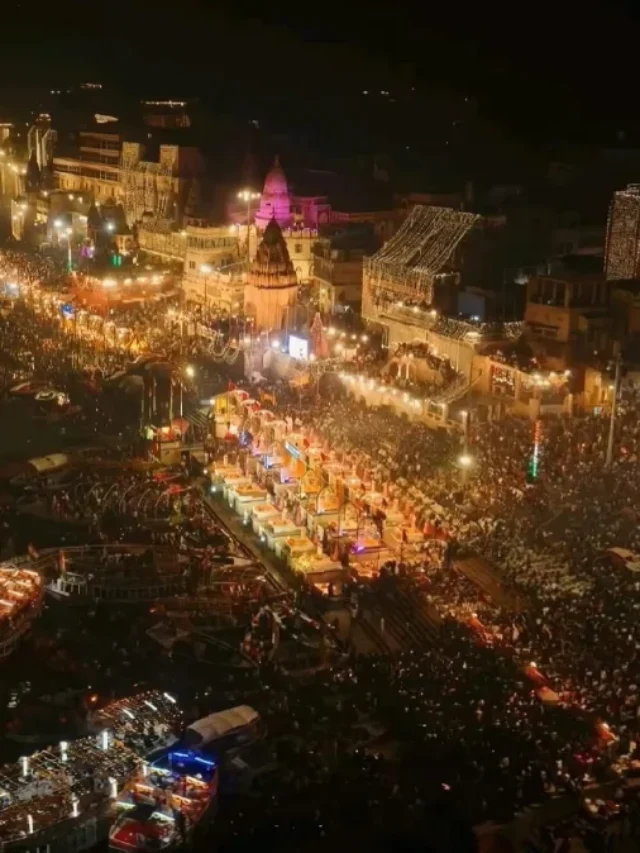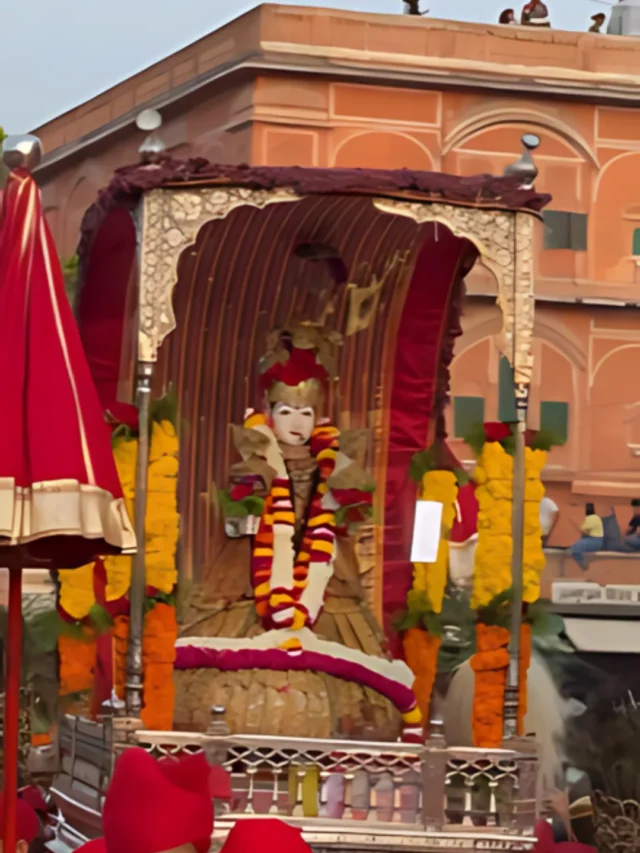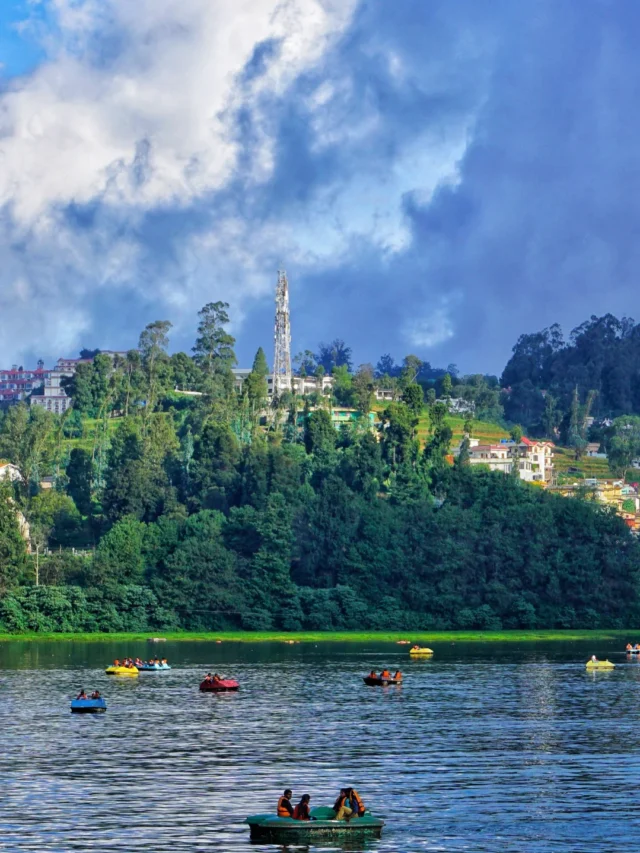The Eravikulam National Park is a beautiful nature reserve in Kerala, just an hour away from Munnar. Eravikulam means ‘streams and pools of water’ and is rightly monikered, so streams of water wind their way into the beautiful place. We will go through the ins and outs of this amazing biosphere that you must visit when you’re in Kerala. Let’s dive deep into it!
History and Significance of Eravikulam National Park: One of the Best Kerala Wildlife Sanctuaries
The Eravikulam Wildlife Sanctuary was a Game Preserve before it was listed as a national park. The British used to use this area for hunting and entertainment purposes. Till 1971, the region acted as a Game Preserve under the Kannan Devan Hill Produce firm and the High Range Game Preservation Association and was taken over by the Government of Kerala. After the takeover, the region was listed as a national park in 1978.
Its land has a history of being auctioned over many years in parts to the local public for agricultural purposes. The area that remained after being auctioned off was named the national park for the preservation of the Nilgiri Tahr, a highly endangered goat in the country. The area also has the Anamudi Peak, South India and Indian Peninsula’s highest peak.
The extensive flora and fauna of the place attracted many scientists and naturalists, which led to the region being renamed the Eravikulam-Rajamalai Wildlife Sanctuary. Environmental protection initiatives were taken to protect the wildlife and flora of the place from then on. Currently, the ecosphere is managed by the High Range Wildlife Environmental Preservation Association and the Forest Department of Kerala for the preservation of the exotic goat, Nilgiri Tahr and the neelakurinji flowers.
The park is spread over 97 square kilometres and boasts a lively collection of flora and fauna. Other surrounding Kerala wildlife sanctuaries of Chinnar, Kuinjimala, Anamudi Shola and more make up the best Western Ghats biodiversity for you to witness.
The Enchanting Flora and Fauna of Eravikulam National Park
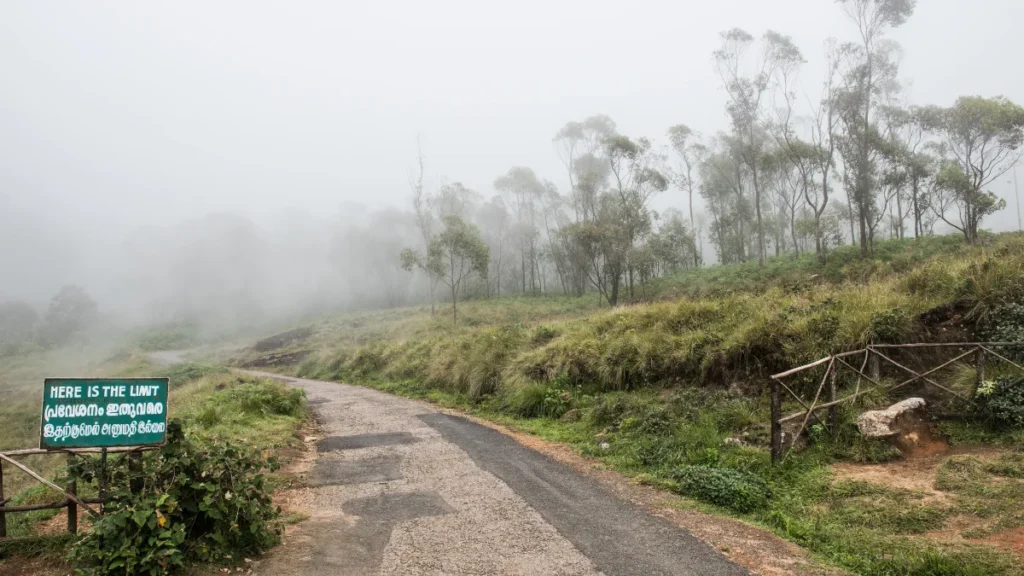
It is divided into 3 regions, only one of which is accessible to tourists. The core area and the buffer area are for the breeding and preservation of the goats, while the tourist area is reserved for the tourists. Tourists can witness the beautiful wildlife while supporting the preservation of the beautiful animals.
Flora
The most famous plant here is the neelakurinji flower, which blooms once every 12 years. With its last bloom in 2018, it will bloom once again around 2030. These beautiful blue flowers can be marvelled at from the tourist area of the park along with other animals.
The secondary flora of the Eravikulam National Park includes grasslands, Shola forests, and shrublands. The park is also a high-altitude grassland reserve. The grasslands mostly cover the high plateaus and hills that encircle the park, with the shrubland becoming more noticeable around the bases of the cliffs. The valleys between hills and plateaus are home to the Shola woods. The northwest and southwest sections of the park are separated by Turner’s Valley, the deepest valley in the area.
There are several medicinal plants in the area as well. Drosera peltate and Elettaria cardamomum are two of the 700 medicinal plants found in this region, giving it another title of Medicinal Plant Conservation Area.
The area is also home to the tributaries of Rivers Periyar, Chalakuddy and Pambar, which gives the park its name ‘Eravikulam’. These tributaries not only provide irrigation water and drinking water for the animals but are also helpful in the preservation of the nearby Aanjanad Valley.
Fauna
The most famous animal in the sanctuary is the Nilgiri Tahr. The park is primarily a Nilgiri Tahr habitat. Apart from that, you will also find dusky-striped squirrels, small-clawed otters, ruddy mongoose, and other intriguing animals within the vast expanse of the Reserve.
There are many reptiles, fishes, and butterflies to be found here, along with the wild animals. Some of the most prominent birds here are the jungle bush quails, white-breasted kingfishers, Indian lorikeets and more. The park also houses many amphibians, such as the yellow-bellied bush frogs and ridged toads.
Things to Do in Eravikulam National Park
The beautiful forest area of this high-altitude grassland reserve offers tourists many activities.
1. Witness the Beautiful Nilgiri Tahr
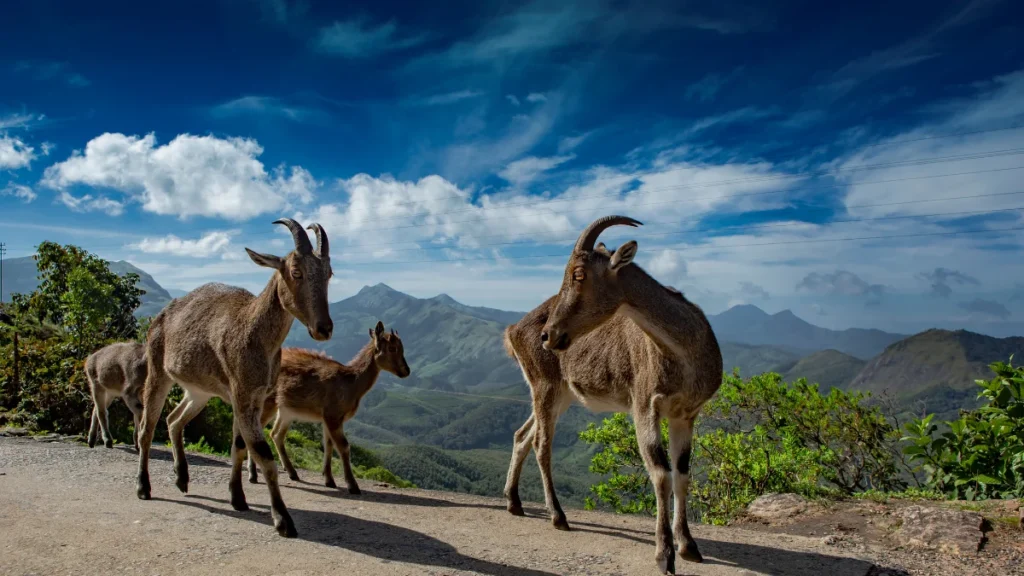
As the place is home to the Nilgiri Tahr, you can get a chance to witness these beautiful curved-horned goats in the Rajamalai area of the Reserve. Being present for this show is an experience of a lifetime, a story that will be told for many decades to come. According to the most recent information available from the tourist management system of Eravikulam National Park, the best method to spot these rare animals is to go about a kilometre down a narrow black road to the intersection where they peacefully reside. They have become friendly and acclimated to the polite presence of humans over time.
2. Trek to Anamudi Peak
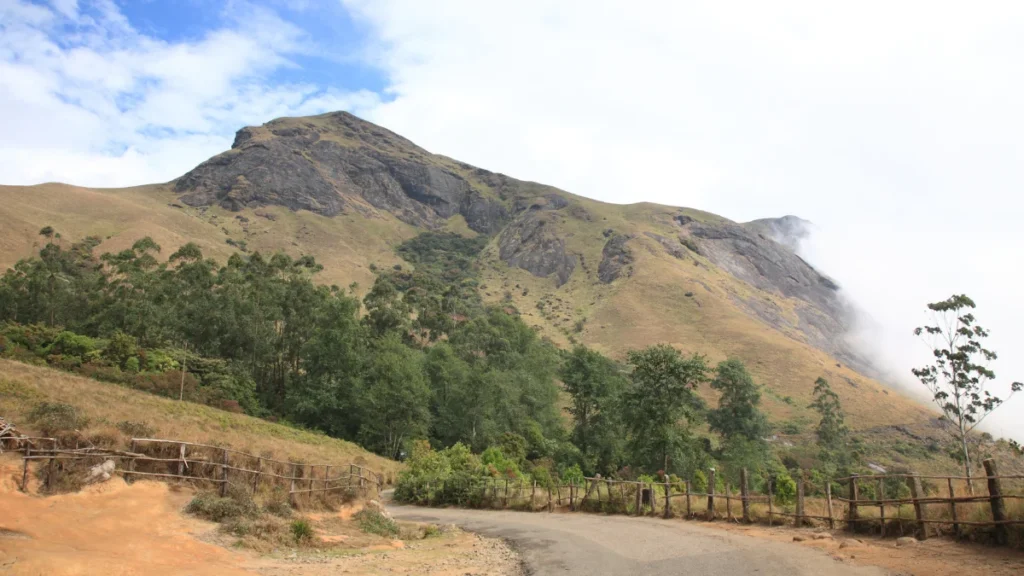
Anamudi Peak sits at a height of 2,695 metres and is the highest peak in Indian Peninsula and South India. You can trek to this beautiful hill to witness the goats and the neelakurinji flowers! The hill is shaped like an elephant, hence the name Anamudi.
3. Get Educated at the Story of the Park

Eravikulam National Park has “Story of the Park,” its own Interpretation Centre, in an effort to educate the public about environmental issues. This centre aims to provide visitors with a broader knowledge of biodiversity via the use of fascinating demonstrations and engaging infographics. The programme aims to inform and increase public understanding of how vital it is to protect the park’s diverse ecosystem and to take environmental protection initiatives.
4. Witness the Majestic Lakkam Waterfalls
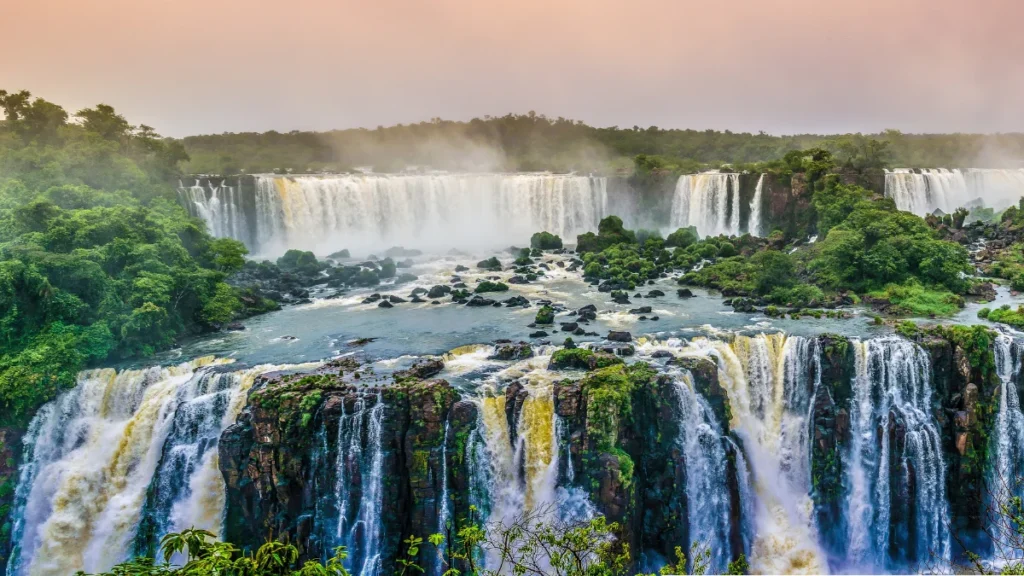
Discover the compelling attraction of the Lakkam Waterfalls, a stunning sight in the heart of South India, where glistening pure waters plunge with amazing intensity. This marvel of nature rises in Eravikulam National Park and empties into the Pambar River. It then travels through the easternmost region of Kerala and merges with the majestic River Cauvery in Tamil Nadu. Enjoy a peaceful moment while watching the waterfalls flow, munching on some food from the café nearby, and perusing the eco shop’s selection. Lakkam Waterfalls promises an all-encompassing and immersive trip into the beauties of nature in addition to a visual feast.
5. Stay at the Reserve
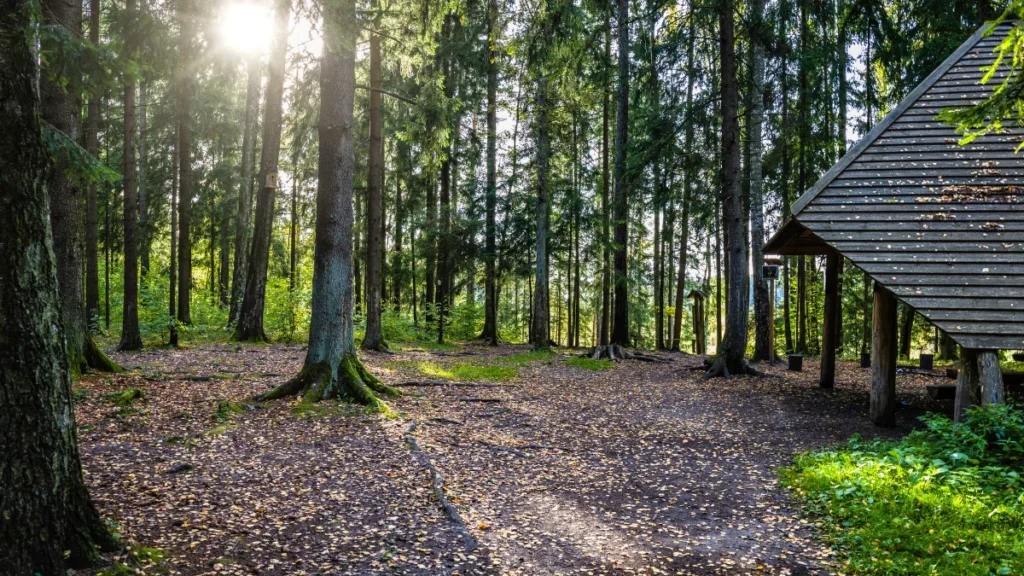
The Lakkam Log Huts are a great place to spend a night amidst nature. For just Rs. 3000 a night, you can have an enchanting experience of staying among the high grasslands and Shola forests. It is a once-in-a-lifetime experience that you must take advantage of!
6. Explore the Many Treks of Eravikulam under Kerala Tourism

Kerala’s tourism department organises many treks along the park for minimal fees. You can take those for an adventurous day in the hills. There are 3 trekking trails here – the Kurinji Trail that offers a grand view of the goats and the blue flowers, the Lakkom Waterfalls trail that takes you to the waterfall to take in its magical view, and the cascade walk that takes you through the Shola forests and the Lakkom Waterfalls.
The Kurinji trail is worth INR 290, the Lakkom Waterfalls trek is for INR 20, and the cascade walk is for INR 100. You can book these from the Kerala Tourism Department’s website! You can also book log huts from there as well.
Eravikulam National Park Timings
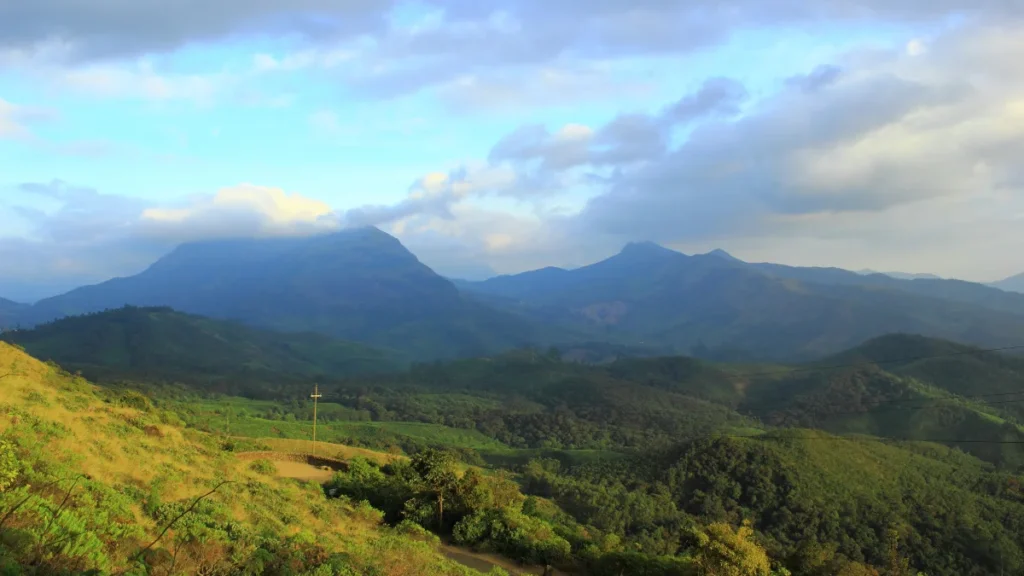
The park is open to tourists from 07.00 A.M. to 06.00 P.M. daily. It closes for two months in February and March due to the calving season of the Nilgiri Tahr.
Eravikulam National Park Entry Fees
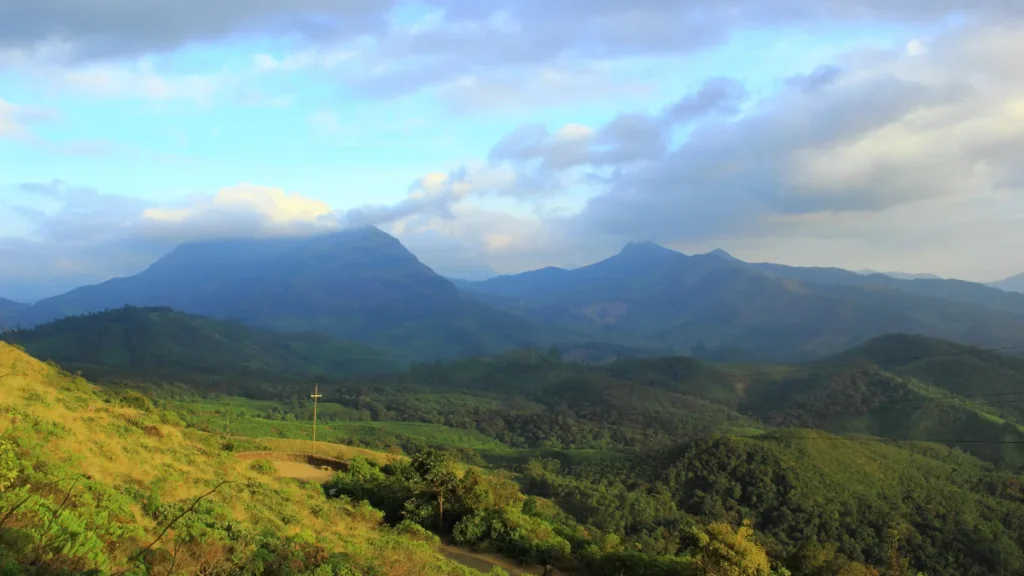
The Eravikulam National Park ticket is available online for you to book. For Indian adults, the price is Rs. 125, and for children, it is Rs. 95. Videography and photography are chargeable separately. For foreigners, the entry fee is Rs. 420.
Best Time to Visit Eravikulam National Park
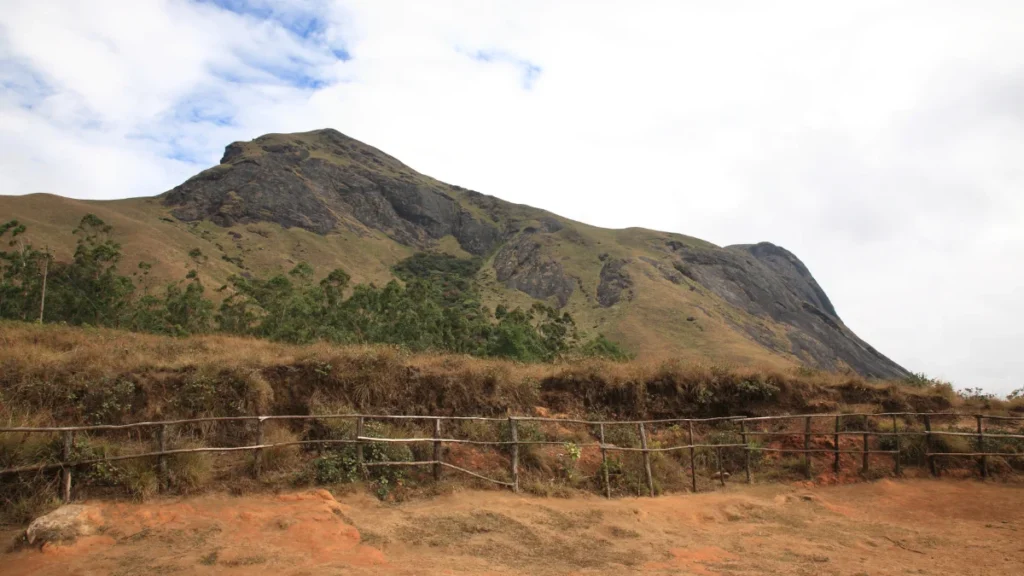
The perfect time to visit this nature reserve is from September to February. The weather is pleasant and not soggy. You can also visit Munnar during the same time, making a complete package of your trip to Kerala.
How to Reach Eravikulam National Park
By Air: The closest airports are located in Coimbatore and Trivandrum. Once there, take a bus or drive to Munnar, which will provide you with easy access to the park.
By Road: Hire a taxi from one of Munnar’s vehicle rental companies to streamline your trip and guarantee a relaxing and hassle-free journey to Eravikulam National Park.
By Train: The nearest train station, with excellent connections to nearby states, is Aluva. Buses and taxis will get you to Munnar, the entrance of Eravikulam National Park, quickly from Aluva.
Nearby Tourist Attractions and Activities
There are many nearby attractions and activities for you to visit and engage in for a fulfilling trip to Eravikulam National Park.
1. Mattupetty Dam
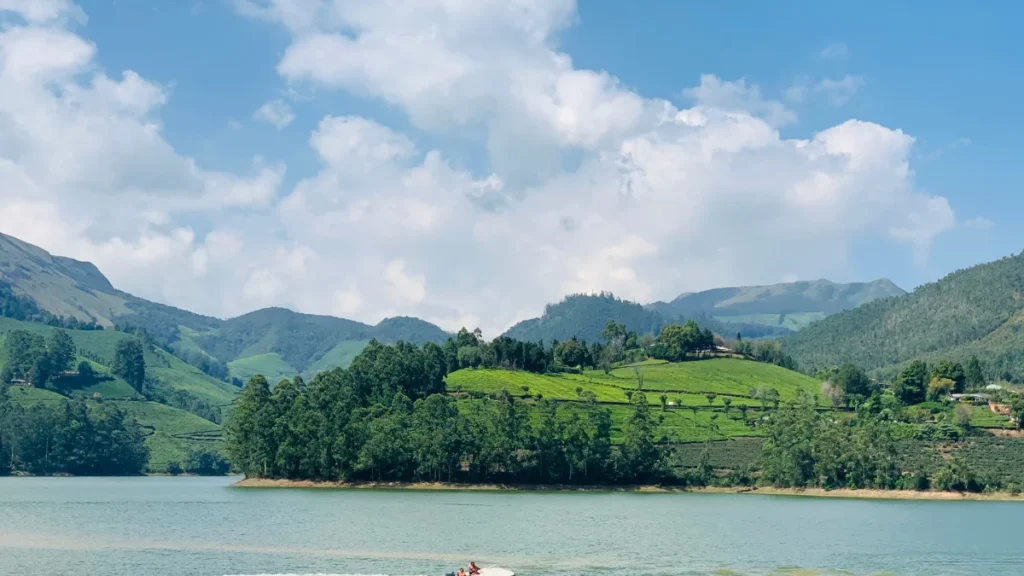
Tucked away in the picturesque settings next to Eravikulam Wildlife Sanctuary, Mattupetty Dam is a mesmerising sight. This picturesque reservoir provides a peaceful haven surrounded by verdant tea plantations and undulating hills. Enjoying boat excursions on the immaculate waterways while taking in expansive vistas of the Western Ghats is an option for visitors. Given its proximity to Eravikulam National Park, Mattupetty Dam is a perfect addition to any itinerary that emphasises nature. Since the dam is easily accessible from Munnar, visitors have even more chances to take in the tranquil beauty of the area, resulting in a harmonious fusion of natural beauties.
2. Tea Gardens of Munnar
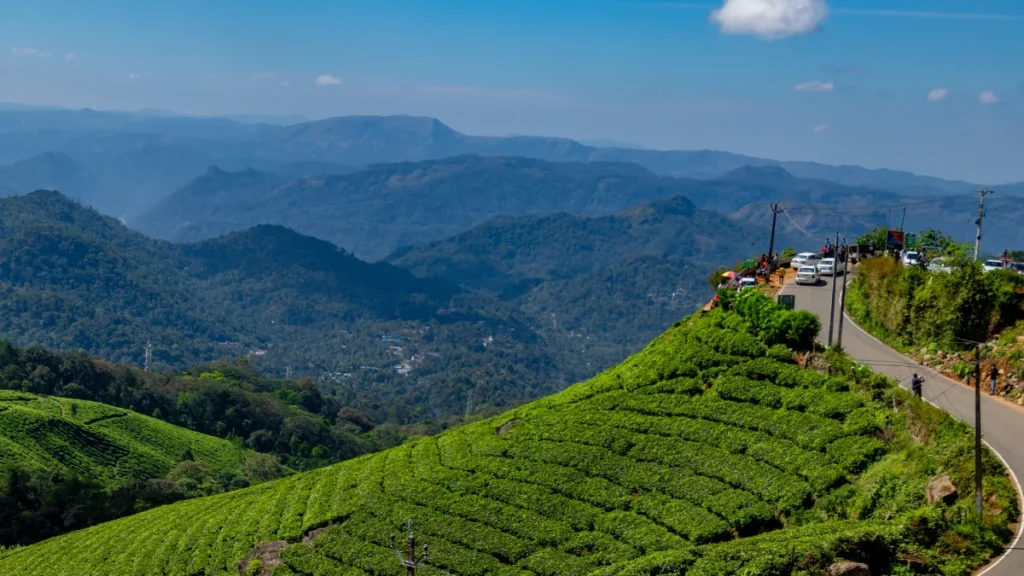
With its lush hillsides and well-kept rows of tea plants, Munnar’s Tea Gardens offers a gorgeous scene that is both calming and alluring. Tucked away in Kerala’s Western Ghats, these vast plantations make up a sizeable portion of India’s tea output. Through guided tours, visitors may learn about the nuances of tea growing and observe the full process, from plucking to processing. As you walk through the plantations, the pleasant scent of freshly cut tea leaves fills the air, creating a sensory experience. The Tea Gardens of Munnar are a must-visit location for nature lovers since they not only display the craft of brewing tea but also provide spectacular vistas of the surrounding hills.
3. Attukal Waterfalls
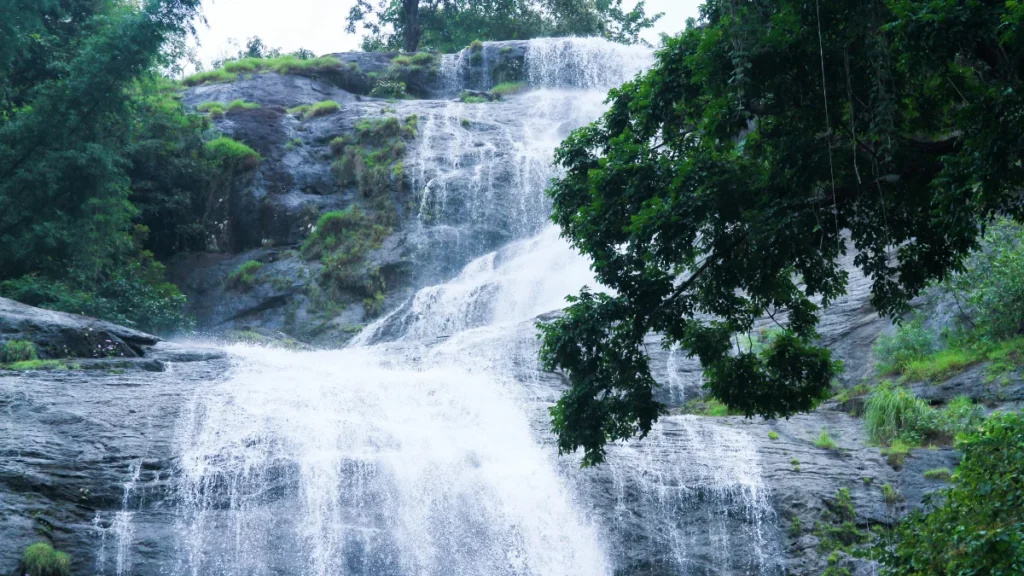
Attukal Waterfalls is a hidden gem in Munnar’s verdant landscapes that captivates tourists with its tranquil atmosphere and natural beauty. The sound of the falling water provides a calming melody as it is tucked away between rolling hills and lush vegetation. For those looking for quiet, Attukal Waterfalls is the ideal getaway, and it’s conveniently located near Munnar town. The tea gardens and hazy surroundings enhance the enchanted atmosphere. Nature enthusiasts and photographers will find this place perfect, and adventurous individuals may walk along the picturesque trails that lead to the falls. Visitors may enjoy a cool respite at Attukal Waterfalls, where they can take in the unspoiled splendour of Kerala’s Western Ghats.
4. Chinnar Wildlife Sanctuary
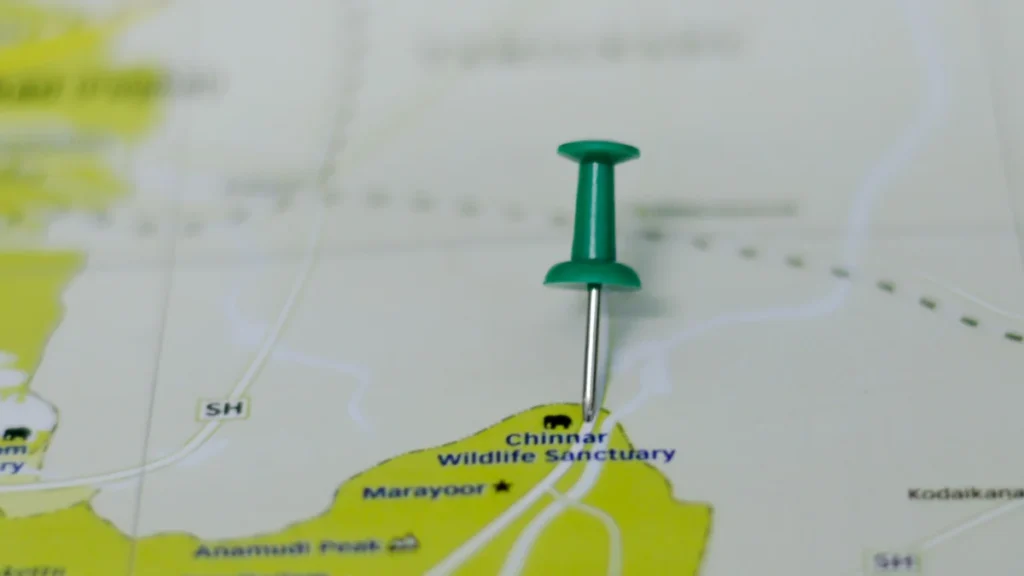
Chinnar Wildlife Sanctuary is a biodiverse paradise for nature lovers, located in Kerala on the eastern slopes of the Western Ghats. Chinnar offers a unique wildlife experience. It is home to a wide variety of flora and animals, including the endangered Indian star tortoise and the grizzled giant squirrel. A variety of habitats are created in the sanctuary by its riparian ecosystems, thorny scrublands, and dry deciduous woods. On guided excursions, visitors may see a variety of species and take in expansive vistas of the surrounding area. For those looking for a harmonic balance between nature and conservation, Chinnar Wildlife Sanctuary is a must-visit location because of the Anamalai Hills’ complementing ethereal beauty.
5. Adventure Activities in Munnar
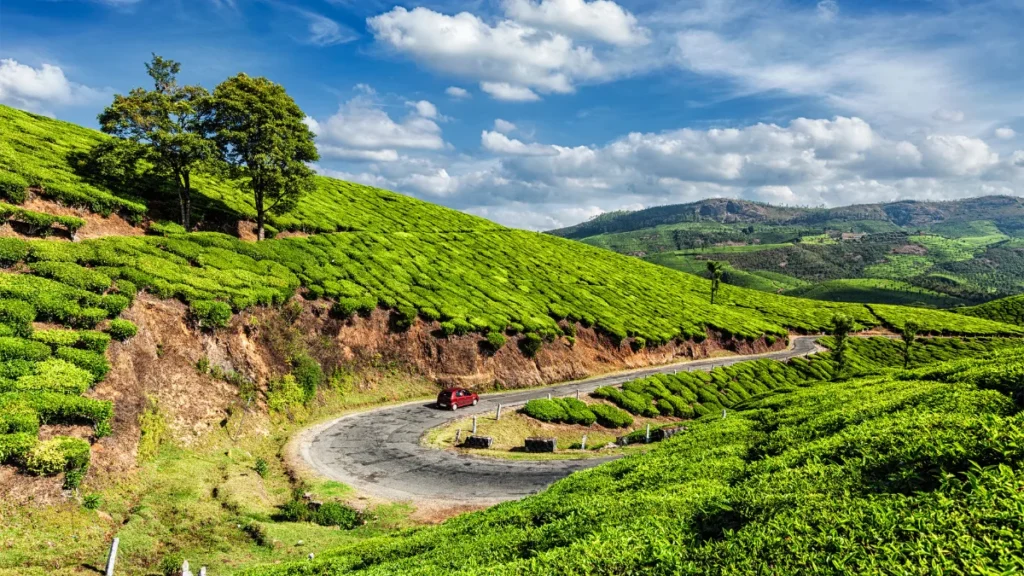
A paradise for thrill-seekers, Munnar welcomes exploration through a wide range of exhilarating activities. Set off on hikes to summits such as Anamudi and Meesapulimala in the Western Ghats. Opportunities for rock climbing abound, offering a heart-pounding adventure among Munnar’s rough landscapes. Mountain biking allows you to explore the region’s many ecosystems at your speed as you ride across undulating terrain. Take a ride on an elephant safari, or try paragliding for a different viewpoint. A combination of scenic beauty and thrill may be found in hot-air ballooning, zip-lining, and boating on Mattupetty Dam. The experience is completed by camping beneath the stars, guaranteeing that Munnar is a haven for both nature lovers and excitement seekers.
Conclusion
The Eravikulam National Park emerges as a biodiversity and conservation haven. The park’s attraction is its dedication to teaching and preservation, which is demonstrated by its unique Nilgiri Tahr and its beautiful waterfalls. By being stewards of this natural heritage, visitors guarantee Eravikulam’s continued beauty for future years.




